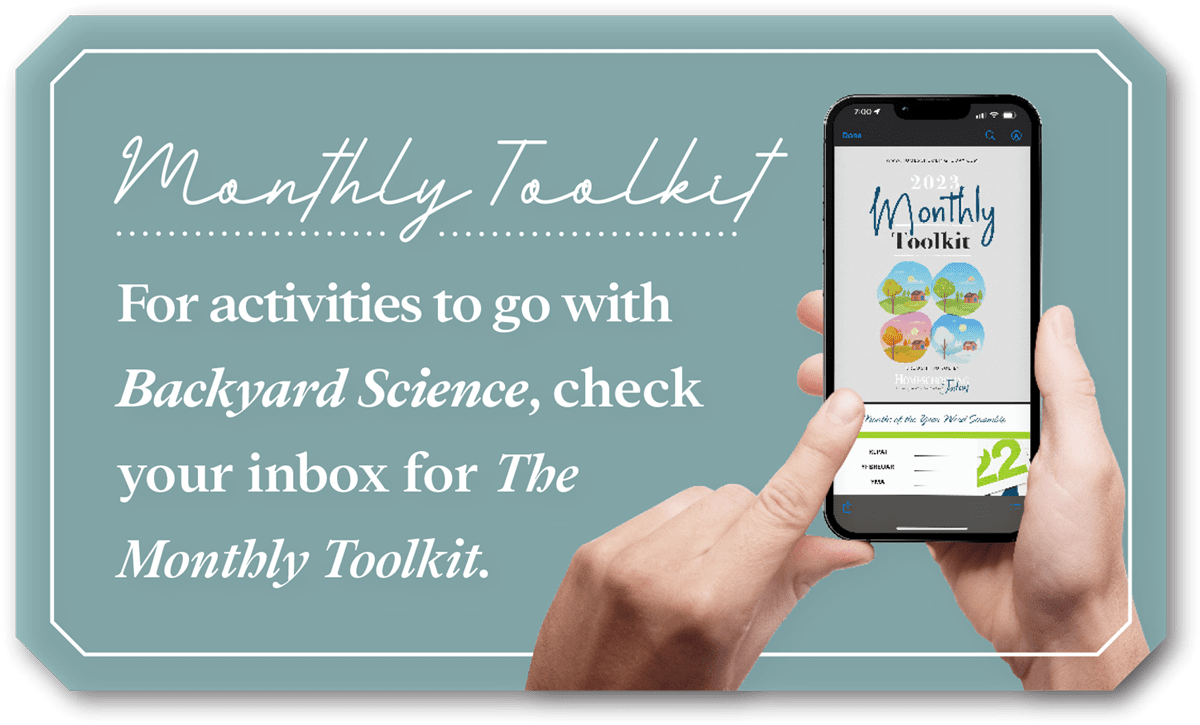![]() Enhanced – check your inbox: for activities in The Monthly Toolkit
Enhanced – check your inbox: for activities in The Monthly Toolkit

Michelle Moody

Upside Down and Inside Out Nature Study
od designed so many unique and funny things in nature. That’s one of the biggest reasons I love to grow flowers—to attract birds and pollinators to our yard so we can see them close up! I want to challenge you to grab a camera (your phone will work great) and try these three ways to turn backyard nature study upside down and inside out, literally, and capture it in pictures.

Look closely at this photo of a spider and caterpillar (1.) under the flower head of a zinnia. It was taken while looking up from the ground. Yep, we were down on the ground in the middle of our back flower garden, looking at nature from an entirely new perspective!
Think about everything going on in that photograph. How do you think the spider and caterpillar got to be on the same flower at the same time? Did the caterpillar become the spider’s next meal? (I don’t know how that poor caterpillar sat perfectly still for over twenty-five minutes!)
Thanks to doing an upside-down nature study, we captured that curious predicament the caterpillar found itself in.
Now it’s your turn! Take a blanket outside, get close to some flowers, trees, and shrubs, and look up. Plan to spend some time there or visit the spot at different times.
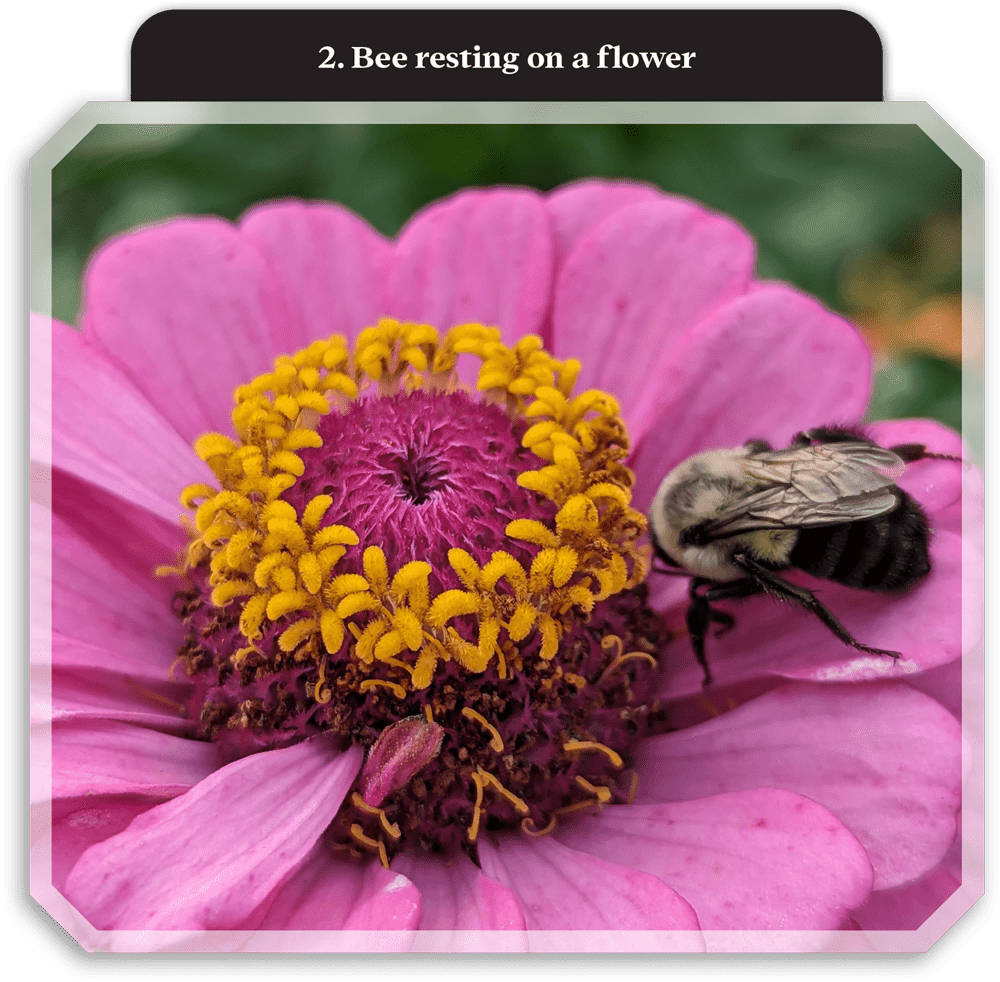
2. Go Inside Out
While watching him, we noticed a bee nestled deep in the shade of the same flower patch. He was sitting on a leaf. Doing some quick research on my phone, we discovered that since this was the middle of the afternoon, the bee was probably dehydrated or had ingested a pesticide. So, we filled a dish with water and brought it close to him.
Look at the picture of the bee resting on a flower (2.) as the sun was setting in our vegetable garden. Was he resting for the evening? Or was he trying to cool off? After a little research, we learned that male bees do not return to the hive at night. They find a cool, safe place to sleep.
It’s amazing what we observe and learn when we look beyond the surface and look inside a stand of flowers or bushes.
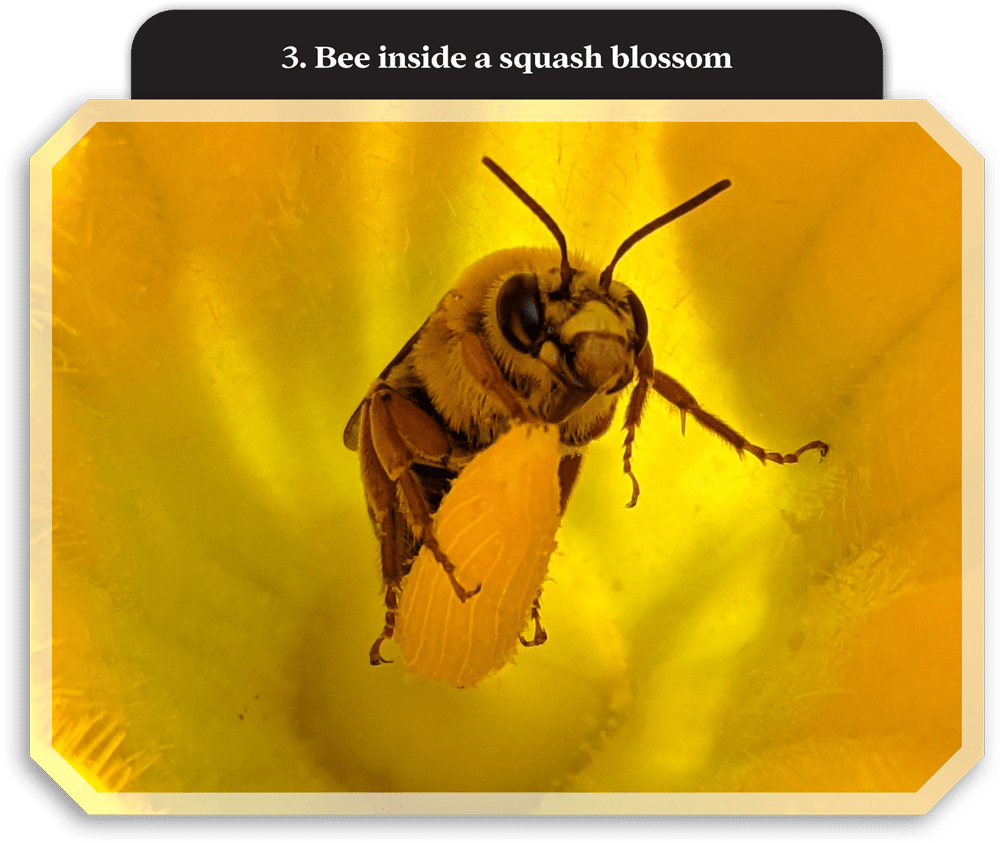
This is why I LOVE getting on the macro level to observe nature. God created so many details in flowers, plants, trees, insects, and animals that we can miss. These little behaviors, like propping a leg on the side of a flower, not only bring a giggle but help our children think and ask questions about creation while marveling at God and His design in nature.
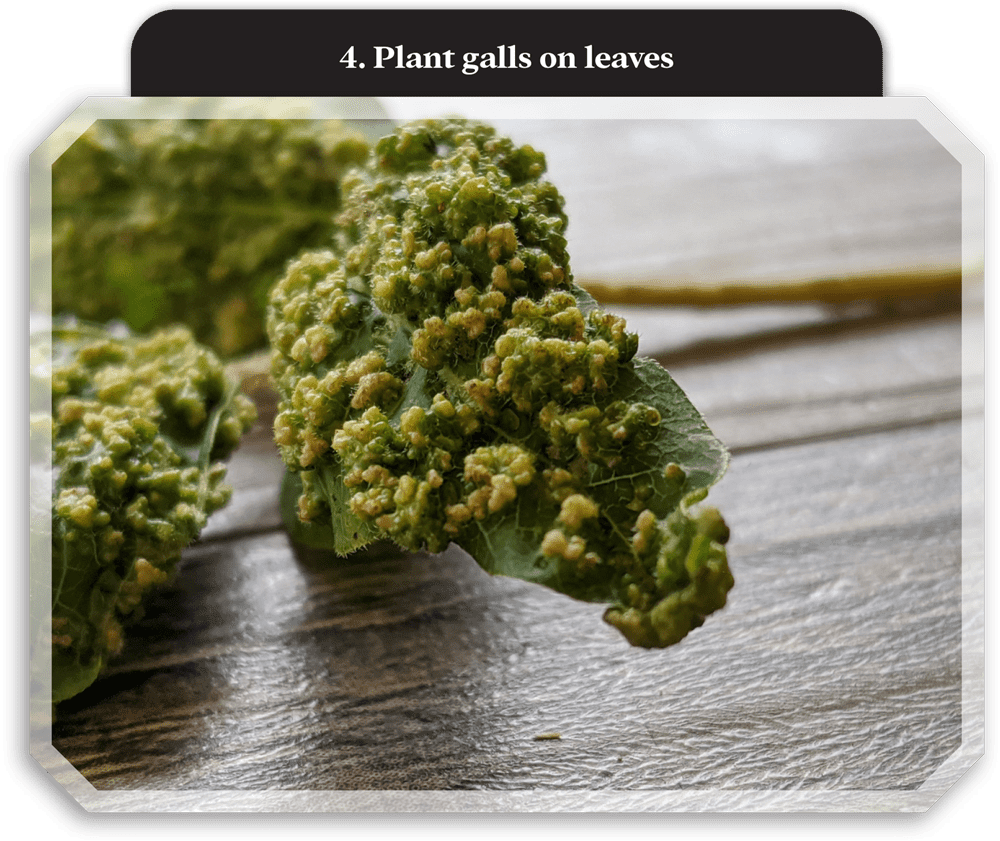
However, we found out that bees rest and cool off inside flowers, and we also knew that males will spend the night outside the hive in a cool, safe spot. Since we had found him at 7:30 in the morning, we decided that he must have been waking up and had not started his day’s work!
Macro photography, as see in the picture with the galls (4.), has improved by leaps and bounds over the last five years. Instagram is full of amazing macro photos of insects, flowers, and rain droplets. One of my goals is to research the ideal equipment setup for macro photography while staying within our budget.
However, until then, we use my phone camera and occasionally put on an inexpensive magnifying phone attachment. You can purchase these on Amazon. While you have to play with them a little and have a small field of vision, there are some neat details you would otherwise miss. For example, in one photo is the mushroom (5.), but we were also able to get an up-close shot of the center of the same mushroom (6.). This resolution is acceptable for our homeschool purposes.

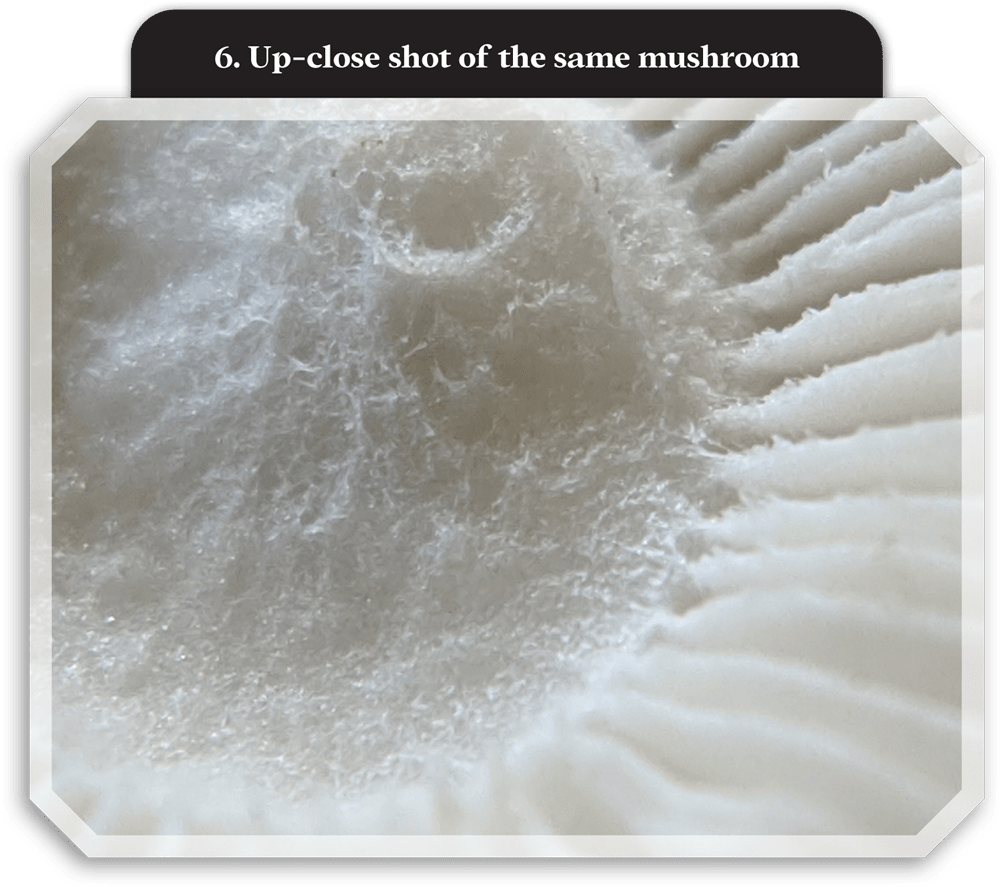
The day they started teaching their fledglings to hunt for food in the grass was exciting. We were a bit anxious because of the hawks that live in our rural area, but the babies made it through those lessons. A few days later came the bathing lessons, which we were able to capture in the photo. Since we worked a lot at our kitchen table, we were able to enjoy these moments and take a few pictures.
We chuckled at how the two siblings seemed to cajole one another. At one point, the daddy bluebird seemed to swat one of the siblings for heckling the other!
It was a wonderful learning experience to have followed this pair of bluebirds from nest building to training their fledglings to survive.

Along the way, ask questions, research the answers, and marvel at God’s incredible creation.

